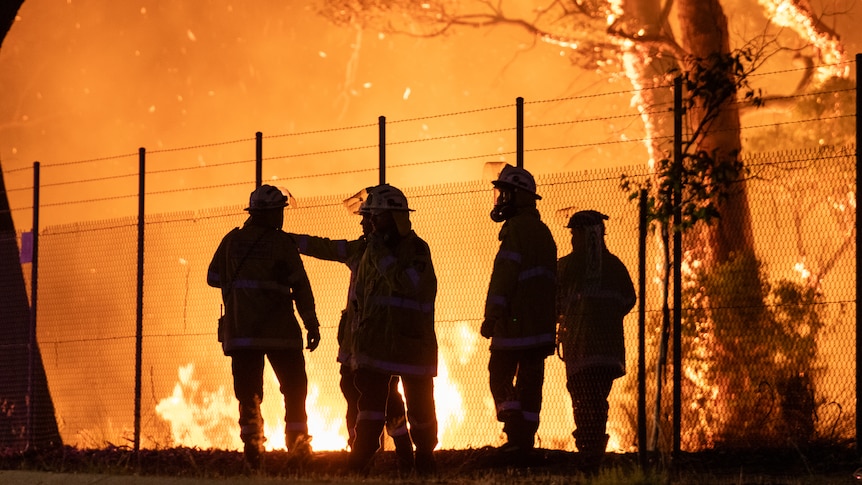Australia Weather News

Firefighters fighting urban bushfire in bushland around Broadcast Australia's ABC radio transmission tower, January 1 2023, Hamersley, Perth WA (ABC News: Andrew O'Connor)
Every year, Australians are impacted by scores of bushfires.
Just this weekend, campers were evacuated off Moreton Island in Queensland's south-east.
A windy and hotter-than-usual Saturday in southern Tasmania saw a dozen crews working to contain a fire in a thick band of trees.
More than a dozen homes were under threat last week on the New South Wales' North Coast.
And it is only October.
But now, Australian researchers have the numbers to show that, around the world, bushfire disasters are becoming more frequent, deadly and economically harmful.
Researchers from the University of Tasmania analysed 44 years of disaster data by examining about 250 wildfire events, which either killed 10 or more people, or ranked among the 200 most economically damaging.
It found that 43 per cent of those major disasters since 1980 occurred within the last decade.
Between 1980 and 2023, economic disasters quadrupled in occurrence, and major fatality events tripled.
"I hope that this analysis puts to bed the idea that maybe it's not getting worse, it certainly is getting worse," lead author Calum Cunningham said.
As disasters became more frequent, the economic damage increased, too.
He said the global spend on direct damage costs for major bushfire events peaked in 2018 at about $US28 billion ($42 billion).
"It is important to say the direct effects are only a fraction of the overall cost because they don't include the indirect effects, such as the flows that ripple through economies after as they try to rebuild," Dr Cunningham said.
The report stated half of all 43-billion-dollar fire events since 1980 occurred in the last decade alone.
Dr Cunningham said economies across the world were impacted by bushfires, but the western parts of the United States — such as Los Angeles — stood out.
Hobart, a tinderbox
The researchers put the data — collected by reinsurance company Munich Re — into a statistical model to identify hotspots for major bushfire disasters.
"We're able to predict across the world what the risk is according to that model, and it showed that coastal Southern Australia is very, very high risk," Dr Cunningham said.
"It provides a tool that points to areas of the world that are most in need of mitigating fire."
He said while the analysis finished at the end of 2023, the model had predicted two highly risky locations where disasters did eventuate: the 2024 fire in Chile's Valparaiso region where 135 people died; and the 2025 fires in LA.
Dr Cunningham said the LA fires had an estimated economic impact of $104 billion.
Researchers found disasters occur when three factors converge: intense daily fire activity, populated areas and valuable infrastructure.
Mr Cunningham said Hobart, Tasmania, was an example of such a place.
"We've got a very extensive wild land urban interface where houses are up against the bushland … and we've got very flammable fuels in those forests," he said.
"So, on a day where there's bad fire weather — hot, dry, windy weather — Hobart has all the ingredients necessary to be a major catastrophe."
Dr Cunningham said he hoped the research showed the urgency and importance of bushfires having "real effects on economies and people around the world".
"But we're not without tools at our disposal here, and preparation is probably the most important of these tools."
ABC